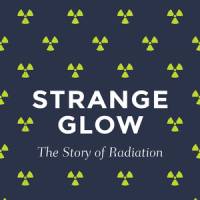"Strange Glow" hits all the notes you'd expect from a book described as "the story of people's encounters with radiation" — from physicist Ernest Rutherford's overturning of the"plum pudding" model of the atom to the "radium girls" who were poisoned by the glow-in-the-dark radium paint they applied to watch faces. But author Timothy J. Jorgensen does more than just retell the anecdotes. He uses them to illustrate his main argument: radiation is not an unfathomable bogeyman, but a well-understood phenomenon whose effects on health can and must be rationally considered given the challenges facing humanity.
Strange Glow: The Story of Radiation, by Timothy J. Jorgensen
512 pages
Princeton University Press, Nonfiction.
"People can make different decisions," Jorgenson says, "all equally valid, as long as they have the facts they need to make a credible assessment of the situation."
Marred only by the occasional tonal misstep ("it's no small feat to drop an atomic bomb from an airplane and not fry your own ass in the process"), "Strange Glow" is clear, engaging and refreshingly willing to treat the reader as a thinking adult.



